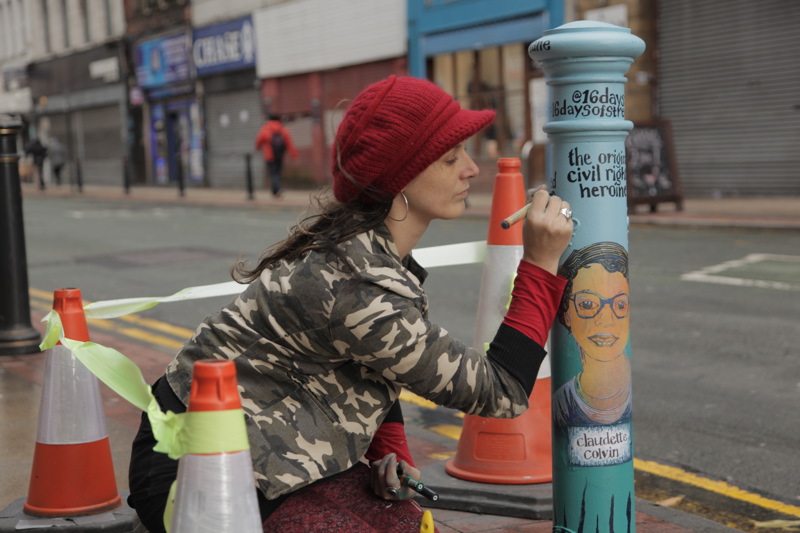Preview: Wonder Woman festival
A forthcoming festival celebrates the importance of art to women’s political protest, writes Sarah Hackett
Weeks after campaigners announced Emmeline Pankhurst as the first female to be honoured with a Manchester statue for over 100 years, the city is preparing to host its annual Wonder Women festival. The festival, which aims to celebrate the North West’s feminist frontline, will feature performance, film, debate, talks, workshops and exhibitions that will explore women’s achievements in the birthplace of the suffrage movement.
Acclaimed artists on the line-up include Sandi Toksvig, Anne-Marie Duff, Bryony Kimmings and Bridget Christie. The events are scheduled over 10 days – with International Women’s Day wittingly falling in the middle of the festival.
As part of the listings, artist Helen Mather has devised an innovative workshop that aims to encourage visitors to take inspiration from the Women’s Social and Political Union – the Suffragette organisation – and create a piece of protest art using sashes, placards, stitching and rosettes.
The Fabric of Protest workshop invites participants to reflect on the issues facing women today, and discuss what needs to change as we approach the 2018 centenary of women gaining the right to vote.
Proud feminist Mather, who was instrumental in Manchester’s branch of the No More Page 3 campaign to end topless women being featured in the Sun, believes art is important to political movements.
“Throughout history art has been extremely important in protest,” Mather says. “Art is always important for society as a whole; it can be surprising how prevalent it is in everything we do.
“In terms of women’s movements art has been important in communicating ideas, especially in the early days of first wave feminism. Posters, badges, pins, sashes: these were all about women being able to spread the message in graphic ways.
“Sylvia Pankhurst was key to designing and branding the Suffragettes. In a modern sense the Suffragettes were very good at merchandising themselves, and this use of art in protest is still evident in what people do now.
“Art history is about developing motifs and symbols that people can identify with, and I think women have very much done that throughout.”
The Suffragettes’ symbolic colour scheme was an early triumph for artistic branding. Members of the group wore purple for loyalty and dignity, white for purity and green for hope; and all Suffragettes were encouraged to wear the colours “as a duty and a privilege”.
But modern feminist protest art has taken a different shape since the early 20th century.
Mather says: “Over the last 10-15 years artists have been bringing knitting and domestic crafts into public spaces and putting their message across in nanna-type activities and reclaiming them in subtle but still disarming protests. We have seen a lot of people turning to traditional crafts as a way of approaching what is going on with women.
“During the festival two women known as Warp & Weft are going to be yarn bombing four statues of male scientists with crochet masks representing women who have made a contribution to science. They are women who people don’t necessarily know about but they have all done great things and they are all from the North West.”
Mather’s own workshop, due to be held at the People’s History Museum, is open to people of all ages. She hopes the session will encourage discussion and creative thinking.
“I don’t want it to be just women. I don’t want it to be just women who are campaigning for things. I want it to be mixed people who have something to say. It might be small or big. I just want to hear voices and attitudes and thoughts.”
Click here for full Wonder Women listings

Leave a reply
Your email address will not be published.